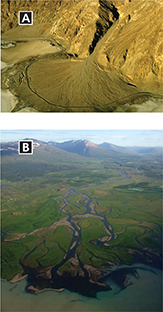Figure 15 Rivers often form winding meanders across their flood plain. This photo shows an oxbow lake in Montana's Blackfoot River Valley.

Figure 16 Alluvial fans and deltas form from sediment deposited by moving water. A This alluvial fan in Death Valley, California, formed from sediment deposited when a mountain stream reached flat land. B When a large river empties into the ocean, the deposited sediment often forms a delta.

Flood Plains
Where a river or stream crosses gently sloping land, a flood plain forms. A flood plain is the flat area along a stream that is entirely covered only during times of flood. As a river flows across its flood plain, it deposits sediment, making the flood plain flat. Over time, this sediment builds up into long, low ridges called natural levees. These natural levees help prevent a river from spilling over its banks. During very large floods, however, a river may overflow its levees and erosion may further widen the valley.
Where a river curves slightly, the water on the outside of the curve moves more rapidly than the water on the inside. Fast-moving water causes more erosion. Therefore, the river tends to remove soil from the outside of the curve. Sediment is deposited on the inside of the curve, where water moves more slowly. Over time, this process forms a looplike bend in the river called a meander.
Sometimes during a flood, the river erodes through a narrow neck of land at the base of a meander and forms a new path. Sediments build up along the new channel, cutting the old meander off from the rest of the river. The result is a separate, curved lake, called an oxbow lake. Figure 15 shows an oxbow lake formed in the Blackfoot River Valley.
Features Formed by Water Deposition
As a stream or river slows down, it begins to deposit sediment. The slower water cannot carry larger particles of sediment, so these particles fall to the bottom first. As the water slows down even more, smaller particles of sediment are deposited.  Features deposited by flowing water include alluvial fans and deltas.
Features deposited by flowing water include alluvial fans and deltas.
As a stream flows out of the mountains and onto the plains, it slows down and sediment settles out. The result is a fan-shaped deposit of sediment on land called an alluvial fan. As shown in Figure 16, alluvial fans often grow into thick deposits of sediment.
When a stream flows into a lake or an ocean, the water slows down. The sediment that the stream was carrying is deposited in the form of a delta. A delta is a mass of sediment deposited where a river enters a large body of water. Some deltas have a roughly triangular shape.




